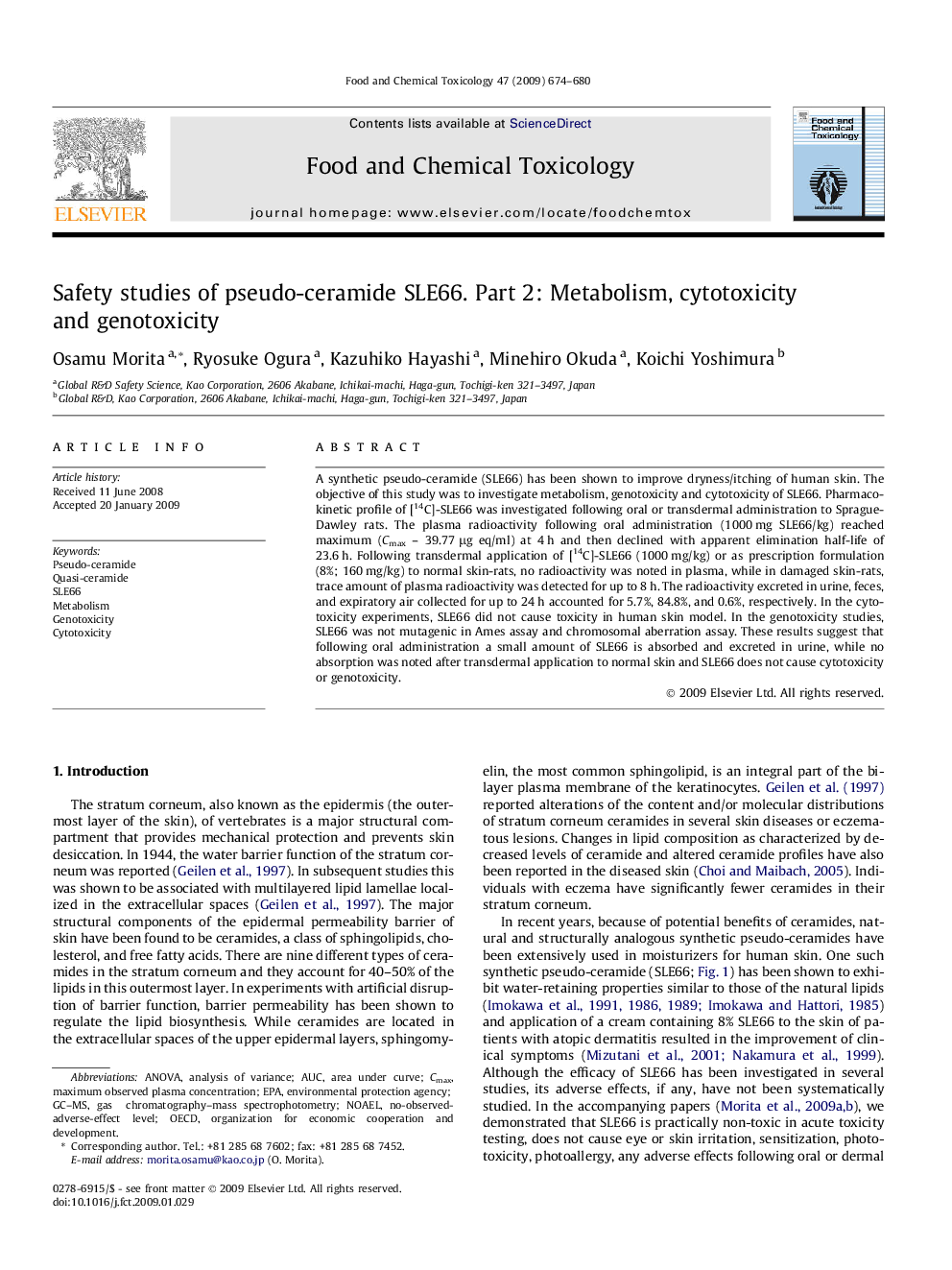| کد مقاله | کد نشریه | سال انتشار | مقاله انگلیسی | نسخه تمام متن |
|---|---|---|---|---|
| 2586139 | 1130893 | 2009 | 7 صفحه PDF | دانلود رایگان |

A synthetic pseudo-ceramide (SLE66) has been shown to improve dryness/itching of human skin. The objective of this study was to investigate metabolism, genotoxicity and cytotoxicity of SLE66. Pharmacokinetic profile of [14C]-SLE66 was investigated following oral or transdermal administration to Sprague-Dawley rats. The plasma radioactivity following oral administration (1000 mg SLE66/kg) reached maximum (Cmax – 39.77 μg eq/ml) at 4 h and then declined with apparent elimination half-life of 23.6 h. Following transdermal application of [14C]-SLE66 (1000 mg/kg) or as prescription formulation (8%; 160 mg/kg) to normal skin-rats, no radioactivity was noted in plasma, while in damaged skin-rats, trace amount of plasma radioactivity was detected for up to 8 h. The radioactivity excreted in urine, feces, and expiratory air collected for up to 24 h accounted for 5.7%, 84.8%, and 0.6%, respectively. In the cytotoxicity experiments, SLE66 did not cause toxicity in human skin model. In the genotoxicity studies, SLE66 was not mutagenic in Ames assay and chromosomal aberration assay. These results suggest that following oral administration a small amount of SLE66 is absorbed and excreted in urine, while no absorption was noted after transdermal application to normal skin and SLE66 does not cause cytotoxicity or genotoxicity.
Journal: Food and Chemical Toxicology - Volume 47, Issue 4, April 2009, Pages 674–680